Sexual Violence: Definition, Why It Occur, Forms, Prevention and Effects

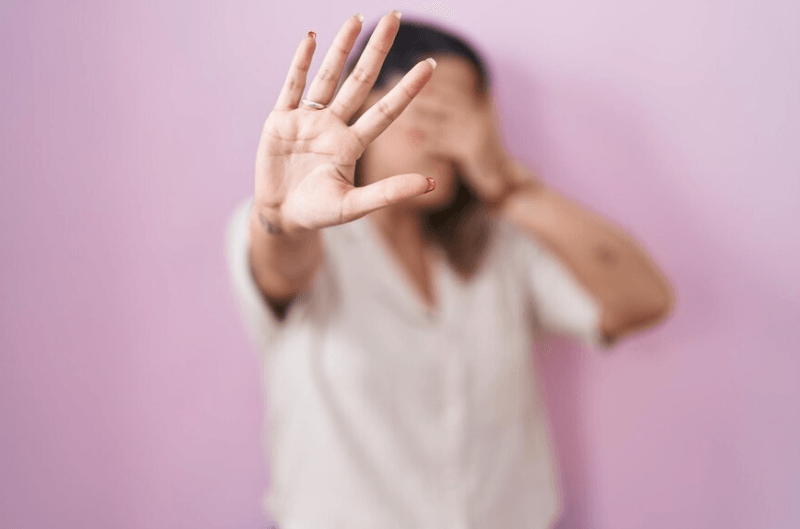
Related products
Sexual Violence Overview
Sexual violence is any sexual act committed against someone without their informed consent. It involves a range of misconduct from verbal harassment to forced penetration - activities that cause harm or discomfort in an individual's life. The World Health Organization classifies it as one of the most pervasive human rights violations worldwide.
Breaking down sexual assault statistics reveals alarming figures globally. Nearly 1 out of every three women has been sexually assaulted during her lifetime, according to global estimates by WHO. These include instances ranging from coerced sex in intimate relationships to rape by strangers or acquaintances.
Several factors contribute to sexual violence; these involve societal norms condoning aggression towards women and certain laws and policies supporting such behaviours tacitly, if not explicitly, present within communities worldwide today.
There exist numerous forms when considering acts related to this devastating issue. Yet, they all fall under broad categories, namely physical (rape), psychological (verbal abuse), and institutionalised offenses like trafficking, where individuals are forcibly abducted into prostitution rings often spanning across borders too, sometimes causing international disputes amongst nations involved therein, generally speaking. However, each case varies drastically depending on circumstances, making consolidation difficult. Understanding these diverse manifestations of sexual violence remains crucial to its eradication.
Preventing sexual violence necessitates a multi-pronged approach that addresses the issue at individual, relational, societal, and cultural levels. At the outset, it involves fostering respectful relationships and empowering individuals with comprehensive sexuality education – critical tools in dismantling harmful stereotypes about gender roles that often contribute to such acts. A robust legal system that addresses this crisis is indispensable in prevention efforts by ensuring perpetrators are held accountable for their actions while providing victims with necessary support throughout their journey towards justice.
Sexual violence exerts profound effects physical and psychological effects on its victims. They typically reside within society's hierarchies or' class divisions.' Physical health consequences might include injuries from physical assaults, unwanted pregnancies, and potential STIs. In contrast, psychological impacts often manifest themselves through feelings like fear or shame, leading some into depression if not coping strategies ranging from substance misuse up to suicidality, more generally speaking. However, everyone responds differently after experiencing trauma.
Therefore, treatment approaches must accommodate these complexities accordingly whenever possible, ultimately aiding survivors to regain control over lives disrupted tragically largely because others chose to disrespect basic human rights, among the most fundamental aspects being freedom without fear, especially relating matters so intimately personal, thereby inherently private, even amidst cultures increasingly open discussing previously taboo subjects nowadays including sex itself.
Moreover, sexual violence impacts every aspect of a victim's life-disrupting their daily activities, livelihoods, and overall well-being. The long-term psychological distress often surpasses the immediate physical injuries that might heal over time.
Looking into rape statistics, it becomes evident how underreported this crime is due to fear of retaliation or lack of confidence in legal systems. Despite these obstacles, various organisations strive tirelessly to raise awareness about the prevalence and impact of rape while advocating for changes at every level.
What is Sexual Violence?
Sexual violence represents a severe violation of human rights and is defined as any sexual act committed without the informed consent of an individual involved. It exists on a continuum that encompasses various actions, from verbal harassment to forced penetration.
Accordingly, sexual assault is one form under the broader umbrella term - sexual violence. Unwanted sexual contact involving force upon a person without their consent or where the victim lacks the capacity to consent falls into this category. It includes situations wherein individuals are coerced into such acts due to threats or manipulation.
Sexual abuse, it refers to engaging in unwanted sexually explicit conduct with another individual against their will, often perpetrated by someone leveraging power over them – physically stronger or holding authority within relationships like caregivers.
Mounting evidence demonstrates how these non-consensual activities contribute towards serious health problems, both physical and psychological, among victims surviving through traumas inflicted initially during incidents themselves, subsequently manifesting multiple ways after that further worsening conditions otherwise manageable typically but not limited exclusively towards STIs/pregnancy following rape besides emotional disturbances such fear/anxiety which lead up till depression even suicide sometimes hence proving beyond doubt that understanding intricacies behind each aspect related overall concept crucial combating global crisis at hand effectively.
Delving deeper into the issue, it becomes clear that sexual violence signifies not simply isolated acts of aggression but systemic forms of discrimination and oppression reflecting societal norms. These attitudes often perpetuate a culture where perpetrators go unpunished while victims bear stigma for crimes committed against them.
Sexual assault statistics reveal an alarming global scenario - around 1 in 3 women have experienced either physical or sexual violence from intimate partners during their lifetimes, according to the World Health Organization's consolidated data on this matter. Similarly, reports on child sex abuse testify to its widespread prevalence, strengthening the case for more concerted efforts toward addressing problems related therein sooner rather than later.
Why Sexual Violence Occur?
Sexual violence, an issue that plagues societies worldwide, remains a subject fraught with complexity and misunderstanding. A thorough examination of the factors contributing to its prevalence uncovers diverse causes rooted in individual experiences, societal norms and structures.
In unraveling why sexual violence occurs, one must delve into people's personal histories. Abusive childhood environments undoubtedly play paramount roles as perpetrators often reveal exposure to family violence during their formative years—either directly or indirectly as witnesses—leading them towards becoming abusers themselves. "Many individuals who perpetrate sexual assault were exposed to violent behaviour at a young age," states Dr Raine Weiner from Johns Hopkins University School of Medicine.
Another conceivably influential factor pertains to mental health issues such as personality disorders or substance abuse problems - which have been linked by numerous studies like those conducted at Yale School of Medicine, stating “There is clear evidence suggesting substance abuse disorder increases risk for engaging in sexually abusive behaviours.”
However powerful these individual aspects might be; they intertwine intricately with far-reaching societal influences fostering conditions conducive for sexual aggression—an all too prevalent part possible due to ingrained patriarchal attitudes endorsing men's entitlement over women’s bodies leading them undertake coercive actions against them without guilt or remorse.
“Patriarchy has created this norm where controversial perceptions of masculinity endorse hostile behaviour towards women, which lead to greater instances of sexual violence," explains Dr Oliver Joubert from the University of Oxford.
Cultural norms and societal values do not operate in isolation but exist within a broader structural context that promotes inequality among sexes—specifically socio-economic inequalities—that exacerbate such violent tendencies. This link between gender-based inequality and rates of sexual violence has been highlighted by numerous researchers including those at Harvard School, who found "a robust correlation between gender-based economic disparities and instances of sexual assault."
Media representation plays an often overlooked role in this spectrum – perpetuating stereotypes or glamorising destructive behaviours inadvertently contribute to normalising such actions causing desensitisation amongst viewers leading towards its rising incidences. A research study conducted by Stanford University asserts “Negative media portrayal is complicit as it reinforces harmful stereotypes about consent and sex itself thus contributing largely to existing rape culture.”
An overlaying problem with understanding why sexual violence occurs lies consequence in victim-blaming attitudes that shifts the blame onto victims rather than holding perpetrators accountable for their heinous acts. According to a report released by the World Health Organization (WHO), “Victim blaming amplifies shame associated with being sexually assaulted further silencing survivors thus nurturing cultures where offenders evade consequences while victims suffer stigmatisation.”
Furthermore, gaps in legal provisions and their enforcement create an environment where sexual violence is not treated seriously. Perpetrators operate with impunity due to laws that fail to protect victims adequately - a phenomenon documented by Dr Angela Browne-Miller from the University of California Berkeley: "Laws dealing specifically with such issues often lack proper definition or penalties required for preventing or punishing individuals involved."
Prevention strategies against sexual violence necessitate multifaceted approaches – awareness campaigns educating about consent and healthy relationships, mental health initiatives targeting potential offenders before they act out these tendencies, legislation reform strengthening victim protection measures while ensuring perpetrator accountabilities are just some aspects needed for addressing this global crisis.
What are Forms of Sexual Violence?
Sexual violence takes numerous shapes and forms - the common thread lies in violating an individual's autonomy over their own body. Individual experiences differ widely, but collectively, they portray a grim tapestry of cruel acts inflicted without consent. From enforced engagement in unwanted sexual activities to unwarranted psychological harm through verbal harassment or degrading remarks about one's sexuality, these constitute just some facets among many others within the broad spectrum that is sexual violence itself.
Records indicate a higher number of female victims globally. However, it must be stated clearly that men, too, fall prey to such heinous actions regardless of societal stigma, often preventing them from reporting incidents as frequently as opposed to women, traditionally usually less reluctant to seek help after experiencing trauma, especially within cultures more supportive towards nurturing empathetic environments conducive for healing overall.
1. Sexual Assault
Sexual assault is an invasive act rooted in power and control and involves unwanted sexual activity. It encompasses actions from forced intercourse (rape) to non-consensual touching, often leaving victims with long-lasting physical and emotional scars.
It occurs for many reasons - societal norms condoning violence against women or men, gender inequality, and acceptance of violent behaviour as "normal" are just some factors that breed such behaviour. Some individuals use it as a tool for domination, manipulation, or revenge, reflecting their inherent desire for control rather than resulting from uncontrolled sexual urges. Preventing sexual assault necessitates comprehensive approaches at individual, relational, and community levels.
Primary prevention strategies include promoting respect and equality in relationships through education programs geared towards dismantling harmful stereotypes associated with gender roles yet so ingrained within societies worldwide today despite decades-long efforts aimed at eradicating them gradually, if not entirely, eventually still proving elusive goal.
Nonetheless, worthy of pursuing relentlessly regardless of obstacles encountered along the way, other imperative steps involve strengthening legal systems to ensure accountability, thereby instilling fear of perpetrators while simultaneously empowering potential victims with the knowledge necessary to protect themselves effectively whenever confronted with similar situations throughout their life course.
More generally speaking, everyone possesses unique capacities to handle crises; therefore, responses vary drastically depending on the person involved. The commonly shared experience among survivors remains deep-seated trauma inflicted, often unexpected encounters leading to severe psychological distress even without physical injuries.
Treatments for sexual assault survivors include medical care and psychological support. Immediate priority often involves treating any resulting injuries or conducting tests to prevent potential sexually transmitted infections (STIs) further down the line caused by the same incident otherwise handled appropriately through a somewhat daunting prospect initially yet indispensable process.
According to guidelines set forth by leading health organisations globally, especially those dedicated to enhancing female well-being, more generally speaking. However, the real challenge lies in addressing emotional aftermaths. It necessitates therapy sessions either individually conducted or within group settings depending on the personal preferences of victims alike, both aiming at helping manage traumatic stress reactions and other mental health issues arising subsequently, such as anxiety disorders, depression, and suicidal tendencies, to name just a few.
Thereby ensuring recovery in a holistic sense rather than focusing on singular aspects alone, ultimately enabling them to regain control over lives disrupted by tragic moments and unexpected brutality committed against their will, significantly affecting daily routines, livelihood, and overall perception of self. Ironically enough, the common denominator among differing treatment approaches encourages survival instincts inherent within everyone, a stark reminder of the resilience human spirit prevailing adversity regardless of intensity thereof, making journey healing seem achievable despite initial scepticism understandably present onset rehabilitation commences earnestly under supervision trained professionals empathetic understanding plight faced survivors cumulatively adds up significant impact long-term outcomes favourably quite contrary popular belief otherwise suggesting opposite true.
2. Child Sexual Abuse
Child sexual abuse is a deeply distressing and damaging form of exploitation that involves engaging a minor in sexual activities they do not fully understand, are unable to give informed consent for, or violate societal taboos about age-specific roles. It includes actions ranging from exhibitionism to physical contact, like rubbing or forcing children into participation in pornography production.
Myriad factors propound the occurrence of child sexual abuse, including but not limited to unequal power dynamics, absence of adequate supervision, and lack of understanding regarding boundaries about personal privacy, often exacerbated by naivety inherent within the youth, thereby permitting such transgressions to occur if left unchecked, amongst other things. Nonetheless, each case remains unique, hence making generalisations difficult despite shared similarities throughout some cases.
Efforts towards prevention necessitate comprehensive strategies involving awareness-raising initiatives directed at both adults as well as their younger counterparts, equipping latter critical knowledge and empowering them to resist attempts made on the part of offenders seeking to exploit innocence existing consequently due to less experience world around hence theoretically more susceptible manipulation generally speaking.
However, tackling root causes seems to be the best approach adopted recently, notably through amendments improving legal structures protecting minors specifically against misconducts mentioned above coupled with support services catering to survivor needs adequately, thus allowing healing effectively overall after trauma endured owing to unfortunate circumstances beyond control sooner rather than later, preferably yet realistically only gradual progress likely given complexities associated issue itself sadly enough even so In terms of treatment for child sexual abuse, early intervention proves vital.
Treatment options include therapeutic counselling as well as a suite of services to ensure the physical and psychological safety of children involved therein; these might range from immediate medical care after incident occurrence to longer-term therapies helping them cope with the resultant aftermath more effectively other than just initial shock experienced consequently during said encounters often unsolicited too unfortunately.
For example, cognitive-behavioural therapy is one commonly used approach that aids minors in managing fears or anxieties stemming from instances akin to such, thereby assisting return towards a semblance of normalcy once again despite immense difficulties initially considering severe impacts associated typically regardless trauma severity gave sensitivity surrounding subject matter anyways hence importance attached recognising signs earlier before irreversible damage done already whether intentional unintentional either way nonetheless damaging long-run ultimately leading potential escalation issues further if not identified accordingly, especially within families displaying dysfunctional dynamics often serving fertile ground breed harmful behaviours including those discussed previously mainly due greater vulnerability present amongst members thereof generally speaking though prevention remains key factor minimising risks posed, therefore, mitigation measures significantly required.
3. Intimate Partner Sexual Violence
Intimate Partner Sexual Violence (IPSV) refers to any form of sexual violation within an intimate relationship where one person coerces or forces the other into sexual activity without their expressed consent. Extending beyond incidents involving physical force, IPSV encapsulates a gamut of behaviours that exert power and control over another individual.
For instance, it might involve unwanted touching, forced participation in demeaning or degrading sexual conditions, and even marital rape- often a hidden but prevalent aspect. It's worth noting though every case differs with circumstances ranging from subtle manipulation to overt aggression undermining victims' autonomy thereby crucially violating basic human rights unequivocally highlighting the necessity for change urgently needed everywhere around the world today especially considering how common these types occur particularly among heterosexual couples.
Therein lie complexities behind why IPSV perpetuates itself - traditional cultural beliefs condoning male authority over women and societal stigma attached when discussing sex openly contribute significantly toward this form of violence. Personal factors like alcohol or drug misuse, poor impulse control, and early exposure to sexual abuse among perpetrators exacerbate the problem.
Prevention strategies primarily focus on promoting respectful relationships as well as understanding consent while emphasising its importance within intimate partnerships universally emphasised across societies regardless traditions existing therein typically varying drastically from one region onto next nevertheless sharing same basic principles essentially thereby effectively reducing chances for misunderstandings potentially leading towards violent outcomes.
Treatment approaches must take into account the complexity surrounding IPSV, incorporating individualised therapeutic techniques such as cognitive behavioural therapy alongside victim support services and providing much-needed assistance during challenging times inevitably encountered along the journey towards recovery. It requires specialised training for health professionals to recognize signs of IPSV and provide appropriate care, including trauma-informed counselling services that help survivors grapple with their experiences while aiming to repurpose pain into strength.
At a community level, initiatives must go beyond just raising awareness - they must create supportive environments that encourage individuals affected by IPSV to seek out resources without fear of judgement or retaliation. Moreover, changes in the legal framework are necessary as well; improved legislation around intimate partner sexual violence is the cornerstone upon which prevention and treatment efforts are built effectively.
4. Drug-Facilitated Sexual Assault
Drug-Facilitated Sexual Assault (DFSA) occurs when drugs or alcohol are used to compromise an individual's ability to consent, leading ultimately to sexual abuse. In such instances, the assailant typically introduces a substance – commonly referred to as 'date rape drugs' such as Rohypnol, GHB, and Ketamine – into the victim's drink without their knowledge, impairing consciousness and memory loss.
In dire situations like these, victims might regain awareness only after considerable time has elapsed since the assault occurred previously unbeknownst, yet leaving physical discomfort behind alongside mental confusion often hindering clarity regarding events that transpired, thus making it challenging for them to seek help promptly let alone remember details accurately concerning entire episode consequently affecting chances justice being served at end due lack evidence supporting claims made by individuals affected directly themselves in first place against perpetrators maintaining innocence falsely more so if no witnesses present verify circumstances surrounding situation thereby reinforcing need preventive measures taken seriously avoid incidents happening altogether.
Prevention starts from educating everyone about signs of spiked beverages along with emphasising the importance of staying vigilant during social gatherings while ensuring drinks remain visible throughout the event duration or simply accompanying companions to fetch refreshments whenever necessary instead of opting to stay back alone, remaining unaware of dangers lurking nearby and threatening personal safety immensely unless precautions adopted diligently rely upon community support enriched through mutual trust enabling everyone present to intervene timely when suspicious activities are noticed, therefore deterring potential offenders from fulfilling ill intentions eventually.
Despite the harrowing experience of DFSA, treatments exist for immediate care and long-term recovery. Medical consultations following such incidents involve STD testing, pregnancy tests if applicable and therapeutic interventions primarily aimed at ensuring physical well-being before addressing psychological trauma induced thereupon afterward through professional counselling services that respect confidentiality while providing comforting environments conducive towards healing progressively over time in most cases provided victims willingly undertake journey upon embarking thereof seeking closure difficult yet ultimately rewarding path leading towards personal growth beyond adversity faced initially thereby attesting resilience human spirit possesses inherently despite external circumstances suggesting otherwise occasionally thus highlighting importance proper treatment essential effective rehabilitation process itself not just merely aspect among others necessarily.
5. Multiple-Perpetrator Sexual Assault
Multiple-perpetrator sexual assault, sometimes gang rape or group sexual assault, entails an array of non-consensual acts involving more than one perpetrator. Multiple-Perpetrator Sexual Assault is a grievous form of abuse, and it encompasses a gamut of direct and indirect physical contact against the victim's will.
Reflecting on infamous cases such as those reported in places like New Delhi (2012) or Steubenville (2013), it becomes evident that these assaults rarely occur spontaneously; rather, they often result from biassed societal views about power dynamics combined with blatant disregard for consent. Unfortunately, multiple perpetrators amplifying each other's destructive behaviours frequently exacerbate the severity of harm inflicted upon victims compared to individual instances, thereby making recovery challenging yet all the more necessary.
These incidents typically stem from cultures that normalise misogyny and toxic masculinity while failing to adequately condemn aggression towards any gender outrightly regardless of where individuals identify within society's binary categorisation along biological lines essentially based primarily upon genetic makeup, therefore inherently rigid by nature itself fundamentally speaking.
However, deviations do exist nonetheless, especially among communities open to embracing diversity despite not necessarily constituting the majority worldwide, even just presently alone, hence necessitating the need for increased awareness regarding the breadth of humanity beyond borders drawn artificially over centuries, dividing people unwittingly into various factions, inadvertently fostering competition rather cooperation ultimately undermining collective efforts aimed towards maintaining peace and security at large.
Preventing multiple-perpetrator sexual assault necessitates a societal shift in attitudes toward power, entitlement, accountability, and empathy. It is imperative to dismantle harmful gender roles through education about consent, respectful relationships, and the inherent dignity each individual possesses regardless of their identity, whether related to sex or otherwise, further highlighting the importance of this particular aspect, including proposed methods resolving issues arising therein currently being discussed globally among various stakeholders involved dealing directly with these matters on a regular basis nowadays.
Treatments for victims must involve comprehensive therapy that addresses both physical injuries and psychological trauma endured yet acknowledges complexities accompanying experiences so intensely personal and often difficult to express verbally, let alone in written form, thereby rendering conventional strategies less effective overall, particularly when compared innovative approaches combining traditional elements within modern settings increasingly prevalent recently due fundamentally changing landscape related healthcare services provision generally speaking.
However, successful examples do exist, nonetheless simply requiring widespread adoption across the board to ensure everyone has access to quality care consistently without discrimination whatsoever, period, deriving essence from human rights principles universally accepted by nations worldwide, therefore, binding morally if not necessarily legally depending upon jurisdictions concerned individually.
6. Sexual Assault of Men and Boys
Sexual assault of men and boys, albeit less talked about, remains a persistent issue worldwide. Sexual assault of men and boys refers to non-consensual sexual acts imposed on males, including physical molestation and psychological abuse related to sexuality.
Despite societal stereotypes suggesting that only females fall victim to such heinous offences, male individuals across all age groups face these brutal incidents. For instance- an adult man might be forcefully subjected to unwanted sexual activities under the influence of drugs or alcohol; a young boy sometimes tragically becomes prey to predatory adults exploiting their innocence cruelly.
The roots deepening this crisis lie primarily within patriarchal norms dictating false notions regarding masculinity along with misconceptions associating victimhood exclusively towards femininity, among other factors, like power dynamics between individuals involved, more specifically speaking. However, reluctance to report due to fear of retaliation and stigma attached to admitting endured trauma unfortunately further fuels the cycle of violence that continues unabated till now.
Prevention strategies are multifaceted – they start from dismantling toxic masculine norms and encouraging silent suffering while perpetuating harmful myths around male invulnerability. Sex education is vital in equipping people with knowledge of respect, personal boundaries, and consent. Moreover, advocating stricter legal consequences for perpetrators enables increased trust in law enforcement agencies, hence creating safer environments for everyone regardless of gender identity.
Treatment options after experiencing assault include counselling and cognitive behavioural therapy, which help victims navigate their trauma and cope with post-traumatic stress disorder (PTSD), depression, or anxiety often associated. Medical treatment might be necessary to deal with physical injuries and potentially sexually transmitted infections contracted during the assault.
Support groups provide a sense of community encouraging shared experiences hence lessening feelings of isolation prevalent amongst survivors particularly males given societal expectations oftentimes forcing them into silencing personal struggles.
In addressing sexual assault of men and boys, the emphasis must be placed on altering societal mindsets and encouraging open dialogue about these issues. Through education promoting respect for personal boundaries and understanding consent in all its nuances lies an impactful step toward prevention. Simultaneously providing victims necessary emotional support following trauma helps facilitate healing.
The path towards healing is indubitably challenging, but with unwavering support and professional help, recovery remains within reach, thereby promising a brighter future devoid of fear for the male victims.
7. Incest
Incest signifies sexual activity between family members or close relatives, typically deemed inappropriate due to the blood ties or familial roles involved. The term incest often encompasses consensual acts and those resulting from manipulation, coercion, and even force. For instance, an elder sibling forcing a younger one into non-consensual activities constitutes incest.
The reasons behind incest are multifaceted and tend to hinge on dominance imposed through hierarchy within families besides exploiting trust ingrained in kinship bonds. It is further fueled by household secrecy, which emboldens perpetrators while silencing victims concurrently.
Preventing such damaging situations necessitates fostering open dialogue about appropriate boundaries amongst family members – vital for maintaining respectful relationships indoors.
Treatment for victims of incest primarily centers around counseling and therapy services, focusing on the survivor's recovery. Trauma-focused cognitive behavioural therapy (CBT) - a form of psychological treatment aimed at addressing fears, anxieties, or other reactions to traumatic experiences - often proves beneficial in these scenarios. It provides individuals with skills to manage distressing thoughts while fostering resilience and self-esteem.
Emphasising confidentiality within therapeutic settings remains paramount in helping survivors feel secure enough to share their experiences without fear of backlash from family members implicated therein. Professionals involved must recognise the difficulty relatives grapple with while going through revelations involving close ones initiating harm upon them, ultimately causing trauma not easily recognisable initially due to largely ambiguous feelings intertwined, usually making acknowledgment even harder over time consequently delaying healing process considerably necessitating patience hence exerting significant pressure clinical experts trying navigate complexities surrounding relationships affected adversely apart obvious strain afflicted individual face personally unless taken account carefully during sessions conducted sensitively taking into consideration unique dynamics existing inside home environments distinct each situation thus requiring bespoke solutions tailored suit specific needs accordingly.
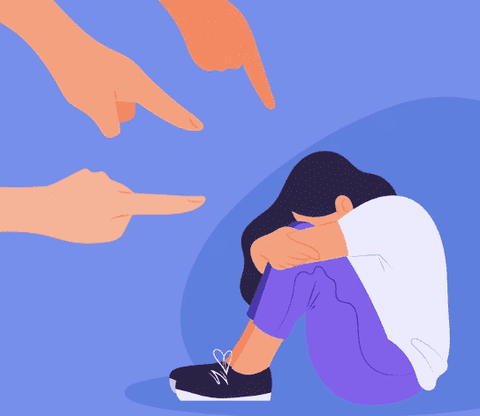
How Can Sexual Violence Be Prevented?
Preventing sexual violence necessitates a comprehensive societal approach. It involves transforming detrimental cultural norms, enhancing legal enforcement, implementing effective policies at institutional levels, and providing education on sexuality.
The prevalence of sexual violence is a devastating global issue, necessitating urgent intervention and prevention mechanisms. Despite the abundance of research in this area, developing effective strategies remains challenging due to the complexity of factors involved.
"Sexual violence doesn't occur in isolation—it arises amidst a constellation of personal experiences, societal norms and cultural beliefs," as noted by Dr Debra Kaysen from Stanford University's Department of Psychiatry. Therefore crafting comprehensive preventative measures demands multi-faceted approaches targeting these underlying issues.
Educational programs serve as one integral layer within such an approach. By initiating open dialogues about consent, respect for others', boundary setting and bystander intervention early on — during adolescence or even earlier— it becomes easier to prevent perpetration later in life.
These initiatives have shown promising results through empirical evidence; Johns Hopkins Bloomberg School presented findings indicating that schools implementing educational campaigns experienced lower rates with regard to incidents involving sexual violation than those who did not utilise them according, healthy sexuality education, help adolescents understand what constitutes harassment and instil skills necessary to navigate consensual relationships effectively.
Moreover there exists value behind community-based interventions engaging men and boys positively alters attitudes towards gender equality thereby reducing chances sexually aggressive behaviour might manifest “Engaging males sending consistent messages rejecting violence and promoting respect for others contributes significantly in reducing the likelihood of sexual violence," emphasised Dr. Michael Flood, a sociologist from Queensland University. Specific programs such as ‘Coaching Boys Into Men’ have demonstrated success by decreasing boys' acceptance of harmful masculine norms which often perpetuate gender-based violence.
The application of technology has emerged as an innovative tool to tackle this issue through apps like “Circleof6,” which allows users to connect with six trusted contacts when they feel threatened or unsafe, thereby potentially preventing cases before they occur. Such initiatives provide tangible evidence that digital solutions play crucial parts within prevention strategies.
Moreover, lawmakers bear considerable responsibility in instituting legal frameworks conducive to combating such offences on wider scales. A study conducted by Harvard Law School stressed: "Adequate laws punishing perpetrators promptly and fairly while supporting victims act as powerful deterrents against potential violators."
Furthermore, establishing comprehensive support mechanisms (like counselling) plays pivotal roles in survivors' healing processes but it needs to be acknowledged more broadly as preventative tools too since untreated trauma might propagate further cycles victimisation perpetrator - hence why medical professionals emphasise integrated treatment plans incorporating psychological therapy alongside other interventions
"Providing robust services to individuals impacted ensures not only effective recovery but a substantial reduction in the ongoing perpetration," as stated by Dr Richard Gartner Founding Director New York's MaleSurvivor.
Notably, holistic prevention mechanisms necessitate commitment from all societal strata: individuals, families, communities to policymakers. Simple actions like fostering respectful relationships and maintaining open dialogue concerning sexual violence play significant roles.
"Prevention starts with creating safe environments where respect for boundaries and mutual consent becomes ingrained into every individual's ethos," expressed Dr Elizabeth Miller at University of Pittsburgh School of Medicine.
Preventing sexual violence requires multi-faceted efforts ranging from implementing education programs about healthy intimate relationship dynamics and bystander interventions; engaging men boys positive manner; using technology as preventative tool ;enforcing strict legal consequences perpetrators while supporting victims robustly through comprehensive service provisions.
While empirical evidence points towards these strategies' effectiveness - such as school campaigns reducing incidence rates or community-based initiatives altering attitudes -, it remains imperative to continually refine and develop further deterrents based on ever-evolving research understanding this complex issue .
"Only by acknowledging the problem in its entirety developing varied adaptive responses will society move closer to realising a world free from fear of victimisation," says Dr Lucy MacGregor Public Health Researcher Bristol University.
What are the Effects of Sexual Violence on the Victims?
Sexual violence, a heartbreaking violation of basic human rights, wreaks havoc in the lives of its victims. Being sexually assaulted induces immediate and long-term effects, from physical injuries to profound psychological trauma.
The physical outcomes of such incidents often vary depending on the level of severity, with non-consensual sexual contact potentially resulting in bruises and tears, while more serious health issues like unintended pregnancies and the transmission of sexually transmitted infections are widely recognised consequences in medical literature. Discussing this specific area of study provides valuable insights into understanding the profound disruptions experienced by individuals when their personal boundaries and autonomy are violated, which is fundamentally linked to their core sense of self. In today's modern societies, there is a growing awareness of the importance of respecting everyone, regardless of their gender identities. However, real-world scenarios often differ from this ideal, making advocacy more crucial than ever. This is especially important given the alarming global statistics on sexual assault, highlighting the existence of many silent victims who continue to suffer in silence.
Psychological ramifications following an episode like these tend to be even more far-reaching, exceeding actual physical harm endured during the traumatic ordeal, notably emotions, extreme fear, and guilt engulfing the minds of survivors, rendering life seemingly unbearable, sometimes prompting increased risk of substance misuse, mental disorders, anxiety, depression, PTSD occurring disproportionately amongst individuals affected directly, therefore, indicating a clear link between incidents of sexual violence and these psychological health concerns.
Survivors often struggle with post-traumatic stress disorder (PTSD), displaying symptoms such as flashbacks, nightmares, or persistent feelings of horror that disrupt daily life. Depression is another common consequence typically marked by profound sadness or loss of interest in activities once enjoyed, leading to decreased productivity socially, educationally, and professionally, affecting the overall quality of life significantly negatively, making recovery a difficult and prolonged process generally but not impossible.
Fortunately enough, if adequate support is received from appropriate channels, notably therapy and medical treatment provided when required promptly, it ultimately aids the healing journey embarked upon bravely after enduring a horrific experience that disrupted peaceful existence abruptly unexpectedly yet courageously nonetheless despite the adversity faced throughout.
Sexual assault strains relationships, becoming a source of isolation. Victims lose the trust of people around them due to fear of rejection and stigma associated with culturally conditioned norms blaming the victim instead of the perpetrator involved, clearly indicating deep-seated societal attitudes towards women and men concerning matters intimately personal and inherently private, therefore demanding respect from everyone irrespective position status society fundamentally speaking more so considering lack thereof empathy understanding prevalent within communities worldwide largely existing unchallenged unfortunately hence why necessary change occur sooner than later.
1. Depression
Depression, a common and serious mental health disorder, impacts individuals by causing feelings of sadness and loss of interest in activities previously enjoyed. It affects one's mood and the physical well-being of an individual, including sleep patterns or appetite. The medical community accepts it as a significant contributing factor to various physical diseases.
When victims experience sexual violence—often leading to trauma—the approach must revolve around empathy and non-judgmental support. Immediate measures entail creating safety nets for these individuals by encompassing them within supportive networks such as counselling sessions or peer groups with similar experiences; this helps reduce feelings of isolation often associated with depression.
An essential aspect when addressing depression brought about by traumatic events like sexual violence involves focusing on empowering the victim rather than dwelling on their status solely as survivors—a shift from passive acceptance towards active resilience building is important here. Professional help needs to foster confidence among survivors that they are indeed capable of healing themselves over time, constituting self-belief being central in combating depressive tendencies.
Steps ought to be taken to transform negative emotions into positive ones, helping ensure gradual recovery from trauma-related depression. An imperative role played again here by therapy professionals is engaging essentially cognitive behavioural therapies (CBT). Therapists guide patients through altering dysfunctional thinking behaviours coupled with teaching coping mechanisms enabling emotional regulation, thus Benefiting individuals in articulating their experiences effectively, eventually managing the stress associated with trauma more efficiently.
Engagement often gets promoted within creative pursuits such as art or writing therapy, helping victims express overwhelming emotions. Such therapeutic avenues provide a safe and non-judgmental space for survivors to process their experience indirectly, easing into acceptance gradually while fostering resilience.
Support groups form another essential pillar for dealing with depression following sexual violence—providing a platform that encourages sharing personal experiences under structured professional guidance; this allows healing through empathy and solidarity. Survivors get opportunities to discuss feelings or concerns openly without fear of judgement, often leading to strengthened self-esteem—a major deterrent against depressed sentiments.
Physical activity must not remain overlooked when considering ways to counteract depressive tendencies either—it's scientifically proven that exercise enhances mood by releasing 'happy hormones like serotonin and endorphin, thus serving as natural antidepressants besides improving overall physical health and aiding recovery further.
Family members play an integral role, too, providing emotional support and reiterating the fact victim isn't alone during trying times—they need reminding about inherent strength alongside reinforcing faith in themselves, standing indispensably crucial, pushing back against shadows cast by traumatic events slowly nudging them forward on paths leading towards effective coping mechanisms turning tables favourably over time diminishing effects spurred forth via depression.
It is worth mentioning the role of mental health professionals in this journey. Trained psychologists, therapists, or psychiatrists help guide survivors through their emotional turmoil at a comfortable pace. They employ various therapeutic strategies like Eye Movement Desensitization and Reprocessing (EMDR) and Exposure Therapy, emphasising controlled exposure to traumatic memories leading towards desensitisation over time.
Nutrition forms an essential foundation for physical and psychological healing—adequate intake of nutritious food rich with vitamins, minerals, and antioxidants helps regulate mood swings and boost energy levels among individuals battling depression following sexual violence experiences.
Above all else—the mantra remains patience coupled with perseverance while combating effects stemming from trauma-induced depression—an understanding needs to be fostered about recovery is not only possible but likely albeit gradual; it requires consistent effort working hand-in-hand effectively armed professional help ensuring empathetic support transforming progressively victims into resilient victors emerging triumphantly from shadows cast by depressive tendencies born out of personal adversity.
2. Anxiety
Anxiety refers to a mental health disorder characterised by feelings of worry or fear strong enough to interfere with one's daily activities. The range of symptoms includes restlessness, concentration problems, and excessive worrying about future events or past mistakes.
Victims who have suffered sexual violence often experience heightened anxiety due to the trauma they endured. Facing such an ordeal leaves deep emotional wounds that manifest as pervasive anxiousness in survivors. A compassionate approach remains instrumental in handling these victims' needs appropriately.
Firstly, it necessitates understanding their unique situation empathetically and allowing them ample time for healing rather than rushing through the process. Creating a safe space for expressing their emotions helps them feel heard and validated, which ultimately leads to recovery.
Rebuilding confidence after experiencing sexual violence involves empowering victims by recognizing their strength and resilience amidst adversity. Directing focus towards acknowledging small victories during recovery contributes significantly to instilling self-assurance back into the victim’s psyche.
Implementing Cognitive Behavioural Therapy (CBT) offers therapeutic benefits wherein individuals learn strategies aimed at altering thinking patterns leading up to negative behaviours like avoidance or self-blame, transforming those into positive coping mechanisms instead.
Physical activity serves as a distraction from stressful thoughts. Likewise, it fosters physiological well-being, thereby mitigating effects associated with chronic stress disorders linked typically alongside conditions involving persistent anxiety. Activities such as walking, running, or yoga provide dual benefits of aiding in physical well-being while helping expedite the healing process.
Equally important is fostering a support system for victims: companionship from trusted friends and loved ones has an undeniable impact on mental health recovery. Their constant presence offers reassurance that they are not alone in their struggle, which helps to alleviate feelings of isolation often tied to trauma-induced stress disorders.
Professional help remains crucial throughout this journey. Licensed therapists trained especially in Post-Traumatic Stress Disorder (PTSD) are equipped with tools necessary for facilitating healthy management techniques associated with severe anxiety elicited by sexual violence incidents, thereby encouraging growth beyond these circumstances regardless of how daunting they might initially seem.
Educational resources aid victims, too – providing accurate information about common reactions after experiencing traumatic events helps normalise their emotions while simultaneously offering suggestions designed explicitly targeting reduction among symptoms commonly under the PTSD spectrum.
Nutrition plays a key role as well - balanced diets rich in fruits, vegetables, and other beneficial nutrients improve overall mood, hence indirectly reducing persistent tension rates experienced characteristically amongst individuals living through high-stress conditions like PTSD following sexual assault traumas.
2. Fear Responses
Fear response entails an emotional reaction to a perceived threat or danger. It encompasses a broad spectrum ranging from minor apprehension to overwhelming terror.
Human bodies react instinctively when they sense jeopardy, triggering physiological changes known as the 'fight-or-flight' response. Heart rate quickens while muscles tense up, preparing the body either for combat or escape.
Victims of sexual violence often exhibit heightened fear responses due to their traumatic experiences. Consequently, supporting these individuals requires a nuanced approach that acknowledges trauma's profound impact while steadily guiding them toward resilience and recovery.
When interacting with survivors of sexual violence exhibiting amplified fear reactions, understanding is key. Their feelings are valid reflections of encountered adversity; therefore, listening empathetically without judgement forms part of essential supportive care.
Psychoeducation plays a crucial role concurrently by demystifying fright and its associated bodily sensations. Letting victims know what happens during it allows them insight into why they might be feeling particular emotions post-trauma, like anxiety or panic attacks – vital steps in regaining control over one’s mental health landscape after a violation has occurred.
But knowledge isn't enough - effective coping tactics must follow suit, too, such as grounding techniques that divert attention away from abstruse fears, providing immediate relief from distressing symptoms. Deep breathing, progressive muscle relaxation, or focusing on sensory details of the surrounding environment serve as examples.
Moreover, empowerment-focused interventions build confidence in survivors by helping them regain control over their lives. Emotional resilience is promoted by enabling victims to foster positive self-perceptions and rebuild faith in personal power and capacity for decision-making. Encouraging incremental achievement goals provides a tangible pathway toward recovery while simultaneously fostering autonomy and esteem.
Balancing confrontation with avoidance serves an integral role, too, when dealing with fear responses following sexual violence—too much overtly delving into trauma-related fears might activate further panic; too little addressing sometimes strengthens fear’s grip over mental well-being. Therefore, under suitable professional guidance, such survivors are encouraged to face traumatic memories without getting overwhelmed gradually—an exposure-based approach that aims at reducing the fear associated with those experiences.
Therapies, including cognitive-behavioural therapy (CBT), have proven effective here, particularly owing to its double approach: challenging irrational thoughts birthed out of fearful reactions along with learning physical relaxation strategies curbing heightened physiological arousal occurring during a terror episode.
Ultimately, though, it remains important to acknowledge not every intervention suits all individuals alike because everyone's subjective experience varies and is significantly influenced by countless factors - like age, gender identity, or previous history apart from the trauma itself. Therefore, tailor-made transformative plans have high value—they consider personal preferences and offer a unique pathway toward triumph over fear responses. It includes integrating various therapeutic practices or catering sessions according to cultural sensibilities—anything that offers comfort while encouraging healing.
Creating a safe environment is another vital aspect of this journey of restoration for survivors of sexual violence. Safety addresses physical aspects and emotional territory, where victims feel secure expressing their feelings without fear of stigmatisation or judgement.
3. Flashbacks
Flashbacks represent an intrusive and involuntary recurrence of a past event or experience in one’s mind. Often associated with traumatic experiences, these graphic memories invoke the sights, sounds, smells, and emotions as vividly as they occurred during the initial episode.
The flashback phenomenon is particularly common among victims of sexual violence. Encounters such as these cast persistent psychological effects that manifest through nightmares and flashbacks. The individual might bear frequent episodes wherein previous scenes play out again, causing severe distress.
The appropriate approach towards addressing individuals grappling with this issue primarily involves allowing them to freely express their feelings without fear of judgement or stigma - all while ensuring proper measures for safeguarding their privacy are in place. A safe space conducive to open communication aids significantly in providing comfort.
Encouragement plays a critical role when assisting those who've suffered from sexual violence; telling them about their strength proves effective encouragement since it underlines recognition of their endurance thus far despite enduring traumatising experiences. Validation often bolsters confidence, helping them face the situation head-on rather than resorting to avoidance strategies, which further escalate mental health complications like anxiety disorders or Post Traumatic Stress Disorder (PTSD).
Utilisation of therapy sessions serves as another effective alternative where tailored treatments help channel thoughts positively by focusing on healing instead of dwelling on painful memories.
Cognitive Behavioral Therapy (CBT) has been found to be a very effective therapeutic approach for individuals grappling with the aftereffects of sexual violence. Techniques employed in CBT help interrupt and change thought patterns, leading to flashbacks, thus effectively reducing their severity and frequency.
Psychoeducation is yet another powerful tool that professionals use in therapy settings, particularly beneficial for victims dealing with mental health disorders post-trauma. It provides them with an understanding of common reactions following traumatic experiences, which aids them in realising they are not alone nor abnormal in their struggles; rather, these represent typical responses witnessed under such circumstances.
Another often recommended practice includes mindfulness exercises or meditation – focusing on aspects like awareness of bodily sensations or breathing patterns helps maintain an individual's presence within reality, subsequently decreasing chances of getting overwhelmed with memories while fostering resilience towards future triggers.
Art-based therapies gain recognition as well - making use of drawing, painting, or other forms to manifest feelings into tangible objects, enabling persons involved to express what might remain too overwhelming verbally. The avenue assists significantly in transforming painful memories over time into less distressing narratives, fostering positive personal growth.
Above all, providing continual support remains essential whether it originates from friends, family members, or support groups comprising individuals undergoing similar issues who understand first-hand what each person endures, thereby validating one’s experience and further enhancing the healing process.
4. Losing Control
Losing control or feeling a loss of personal autonomy and power over one's life circumstances is often the aftermath of traumatic events such as sexual violence. Victims experience an ongoing sense of vulnerability and fear that permeates every aspect of their lives, leading to emotional instability.
Sexual violence victims frequently grapple with this devastating sensation - the inability to exert influence over situations directly affecting them. As a result of invasive violation experienced in episodes like sexual assault, it paves the way for lingering psychological scars, including Post Traumatic Stress Disorder (PTSD), anxiety disorders, and depression.
Regaining control after experiences such as these isn't easy, but it is necessary for healing to occur. Professionals involved in helping survivors rebuild their lives advocate various approaches toward achieving this goal:
Encourage Self-Efficacy: Drawing on principles grounded in psychology research, initiating steps towards encouraging self-efficacy instils confidence back into individuals' abilities to manage tough situations effectively.
Utilise Cognitive Behavioral Therapy (CBT): Empowering participants through therapeutic interaction allows the reshaping of thought patterns connected with unfortunate incidents, thus improving mental health outcomes significantly.
Deploy Mindfulness Practices: Techniques like meditation promote living 'in-the-moment', reducing stress levels while boosting overall wellness.
Facilitate Support Groups: Providing a platform for survivors to share experiences fosters a sense of unity and strength. With the premise that 'no one is alone in their struggles,' such groups offer collective strength and resilience.
Professional Counselling: Experienced therapists possess the necessary skills to help victims navigate through emotional turmoil, gradually restoring control over life scenarios.
Exercise Regularly: Physical activity aids in regulating mood swings and boosts self-esteem by enhancing endorphins, known as “feel-good” hormones- helping regain lost control due to traumatic events like sexual violence.
To transform negativity into positivity post-trauma: Victim needs an environment fostering safety; believing they are secure helps rebuild trust shattered by abuse.
It's integral for them not only to survive but thrive after encountering such life-altering incidents - furthering personal growth or what psychologists label as ‘post-traumatic growth.’ They attain this state upon realising how resilient they actually are even amidst adversity, paving the way towards renewed vigour and positive outlook on life. Adopting trauma-informed practices might eventually enable workspaces or communities to create conducive conditions supporting healing and recovery.
5. Disrupted Relationships
Disrupted relationships, as a term, signify the negative impact that adverse events or circumstances impose on interpersonal connections. Such disruptions often result in distressing emotions such as fear, insecurity, and distrust among individuals involved.
Sexual violence is an unfortunate event that carries a high potential to disrupt victims' relationships drastically. Dealing with victims necessitates empathy, understanding, and utmost patience from their support systems - be it family members, friends, or professionals.
The primary approach towards sexual violence victims involves comprehensive medical attention alongside robust psychological care. Physical wounds might heal over time; however, mental traumas require prolonged emotional healing processes, which entail restorative therapy sessions primarily aimed at rebuilding self-esteem and confidence among survivors of such heinous incidents.
Often, people around sexual violence victims underestimate the power of listening. Empathetic ears pave the way for nurturing trust between assault survivors and others who aim to help them cope with their ordeal.
Moreover, Psychological counselling plays a central role in alleviating the effects of disrupted personal relations post-sexual crimes against these sufferers, too. Professional counsellors guide them through steps focusing incrementally upon gradually rekindling warmth within their interpersonal interactions accompanied by various therapeutic exercises promoting positivity-induction tools, enabling them to harness strength derived thereof redirecting into constructive behaviour patterns effectively, thereby helping boost overall confidence levels amongst victims.
Social support systems, too, play a crucial role in the recovery process of victims. Establishing or re-establishing connections with significant others within their environment allows them to feel validated and cared about - integral components for emotional healing.
Trauma-informed care forms an important part of therapy for victims. The approach acknowledges the impact trauma has on individuals' mental health. It seeks to actively prevent re-traumatization by creating safe spaces where they are treated gently yet firmly - thereby fostering self-empowerment alongside personal growth.
At different junctures during recuperative stages, there must be guiding principles that people involved follow diligently. Respect towards choice-making abilities among sufferers is one such principle, as it helps restore faith in themselves, which was once shattered due to experiences encountered previously under sexual violence incidents.
Group therapies designed specifically addressing targets like escalating confidence levels offer promising avenues inflating positivity amongst survivors, helping convert adversity faced into opportunities instead, thus diverting negatively affected mindsets, paving the way through turmoil successfully achieved over the course with persevered efforts, ultimately leading unto triumphant strides taken against horrors endured turning those challenges faced brilliantly around transforming them progressively forward positively.
Educational programs impart vital knowledge regarding legal rights available, safeguarding interest accrued by these victims, strengthening their ability to hedge recurrences and reflect brighter prospects, and reducing the possibility of encountering disrupted relationships along their journey towards recovery.
One-on-one counselling sessions focusing on establishing and maintaining healthy relationships form an essential part of the healing process. As sexual violence victims move through various stages of re-establishing disrupted relationships, it’s critical to provide them with a safe space that encourages open communication about feelings, fears, and uncertainties.
However, therapy doesn't end with individual or group sessions. Encouraging survivors to engage in activities they love aids significantly in fostering positivity within themselves. Participating passionately in hobbies or interests presents an effective strategy for diverting negativity into productive pathways, resulting ultimately in uplifting spirits among these strong individuals demonstrating resilience throughout struggles faced against intense adversities bravely encountered during life's challenging times, thus reflecting surely upon brighter prospects awaiting ahead determinedly pursued by such admirably inspiring souls boundlessly achieving milestones defying odds post-traumatic incidents emergently displaying courageously fierce battles won worth commendable achievements indeed!
Lastly, yet importantly, professional therapists often recommend practising self-care rituals like mindfulness meditation aimed primarily at directing focus unto building strength both physically and emotionally, channelling energy positively.
6. Loss of Interest in Sex
Loss of interest in sex, known medically as sexual desire disorder or hypoactive sexual desire disorder (HSDD), is a common issue affecting both men and women. It typically relates to lacking any want for sexual activities, which results in personal distress or difficulty within relationships. Loss of interest in sex might be persistent or recur intermittently, and it often causes significant stress.
Sexual violence victims frequently experience a loss of interest in sex due to trauma associated with the incident(s). Having experienced such violation extensively impacts their perception of intimacy, thereby resulting in decreased libido.
Approaching individuals who have survived sexual abuse demands sensitivity and empathy. Often, these survivors grapple with feelings of guilt, shame, fear, or other deep emotional wounds that need therapeutic healing before regaining confidence-related intimate relations.
Psychotherapy is pivotal for those affected by this dilemma; sessions involve addressing traumatic experiences while gradually rebuilding trust toward others and self-worthiness. Psychologists recommend cognitive-behavioural therapy, where an individual learns strategies on how to shift negative thoughts into more positive ones, promoting mental well-being.
Victims must learn not every relationship results in harm nor does it define one’s worth; many supportive partners understand that slow-paced progress occurs during the recovery journey involving patience from both sides till full stability gets restored once again.
Support networks, including trusted friends, family, or support groups, act as a safety net for victims of sexual violence. These networks provide emotional solace as they navigate through the healing process.
Encourage involvement in activities that foster self-belief and confidence, like exercising regularly and taking up hobbies that stimulate mental activity, such as laughter, yoga, painting, or learning musical instruments. Such extracurricular pursuits not only divert minds from unpleasant experiences but imbibe survivors with regained zest towards life itself, thereby assisting them to re-establish their identities beyond the trauma faced.
Sex therapists often play a crucial role in dealing with loss of interest in sex post-trauma, too. Therapy sessions help individuals understand affection is both respectful and mutual consent-driven rather than being forced upon - an important step towards reclaiming one's love life after surviving sexual abuse incidents.
Another practical approach rests on using mindfulness techniques – focusing on present emotions instead of dwelling on past horrors makes way for more positive thinking and helps regain control over feelings associated with intimacy alike.
Lastly, it is paramount to remember every survivor heals at different rates depending largely on personal resilience along with coping mechanisms equipped by professional psychological guidance received throughout the recovery phase till full health eventually gets restored. There lies real victory against any odds encountered during the ordeal.
7. Trouble Concentrating
Trouble concentrating, often referred to as difficulty focusing or mental fog, represents a frequent challenge many people face. It refers to the struggle to maintain attention and focus on tasks or activities for extended periods. Trouble concentrating severely impacts day-to-day life, leading to lower productivity in work settings and difficulties in personal relationships.
When this issue arises from traumatic incidents such as sexual violence, it necessitates a compassionate approach to relieve symptoms and rebuild self-esteem and confidence. The right support channels include professional counselling services that employ evidence-based methods emphasising empathy, patience, understanding, and respect.
Adopting Cognitive Behavioural Therapy (CBT) has proven effective regarding victims of trauma-related concentration issues. Therapists guide individuals through retraining their thoughts into more positive patterns while empowering them with coping skills essential for dealing with stress effectively.
Building resilience against distress is another integral part of managing trouble concentrating due to trauma like sexual violence. Helping survivors regain control over their lives starts by encouraging participation in regular physical activity, shown to be scientifically linked to enhanced cognitive functions, including improved memory recall and increased ability to concentrate better overall.
Reintegrating into social circles forms an additional significant step toward recovery, too. A supportive community network is invaluable for improving emotional health and well-being.
Art therapy interventions have emerged as valuable tools for sexual violence victims with difficulty concentrating. Such creative outlets help individuals express feelings that might be too difficult to verbalise, providing a way to heal and regain focus over time. Activities like painting, drawing, or sculpture become platforms for releasing repressed emotions and encouraging positive cognitive engagement.
Guided meditations have garnered attention as effective ways of managing trouble concentrating post-trauma. Techniques such as mindfulness meditation promote relaxation while enhancing concentration abilities by training the mind to stay focused on present moments without distraction.
Nutrition must be considered when combating issues with focusing due to trauma impacts. A balanced diet enriched with omega-3 fatty acids, complex carbohydrates, and lean proteins aids brain function, improving the ability to concentrate well.
Last but not least, ensuring quality sleep becomes crucial to this path of recovery. Poor sleeping patterns worsen cognitive difficulties, thus making it essential to adopt habits conducive to good rest.
Remember, every individual is unique; there is no one-size-fits-all approach to tackling trouble arising from experiences of sexual violence. Tailoring strategies to match specific needs often yields the most successful results, bringing about renewed confidence, self-esteem, and better cognition.
Support groups play a powerful role in overcoming concentration issues resulting from traumatic experiences. The opportunity to share personal thoughts, fears, and feelings with others who have had similar experiences encourages validation of feelings. It fosters a sense of belonging, promoting psychological healing while improving cognitive functioning.
Furthermore, professional helplines for victims of sexual violence offer immediate assistance any time there is a need, providing information on local resources such as therapists or support groups suited to individual requirements.
Establishing routines has proven beneficial, too, when it comes to regaining focus post-trauma. Predictability allows victims to regain control over their lives by limiting uncertainties; having structured daily schedules aids in a better mental framework, enhancing the ability to concentrate effectively.
Turning towards relaxation techniques like deep breathing exercises, yoga often helps manage stress-related poor concentration. A calming mind-body essentially fosters clearer thought processes.
Living after experiencing sexual violence is never an easy journey for survivors. Still, by empowering them with the right tools and skills, they eventually find strength in overcoming challenges, including trouble concentrating. Emphasising resilience and compassion path recovery is crucial to restoring confidence and self-esteem to each survivor, reminding them that every day is worth living to the fullest despite past traumas.
Concentration problems are complicated and interconnected in various aspects of life. Hence, it requires a holistic approach to consider multiple factors, including physical health, emotional well-being, and social influences. Thus, an all-encompassing management plan beyond mere symptom relief becomes essential for sufferers to find peace and thrive.
Exposure to nature has demonstrated therapeutic effects on those who struggle with focus issues after traumatic events. Green environments reduce stress levels by promoting serenity, aiding better mental clarity, and improving concentration.
Adopting positive affirmations serves as another tool for these victims. By consistently reinforcing positive thoughts about themselves, individuals begin questioning harmful beliefs they might hold due to their trauma, gradually leading them towards a healthier state of mind that improves their attention span.
In addition, therapists suggest EMDR (Eye Movement Desensitisation and Reprocessing) therapy, which employs specific eye movements designed to treat symptoms of PTSD and other emotional disorders. Through desensitising distress caused by disturbing memories related to sexual violence, it aims to help survivors regain normal cognitive functionality.
8. Guilty Feelings
Guilt refers to the uncomfortable sensation experienced when a person believes they have done something wrong. Guilty feeling emerges as an internal signal informing individuals about their behaviours that potentially harm themselves or others around them - accidentally, unintentionally, or knowingly.
Guilt assumes diverse forms and shapes for survivors of sexual violence who often find themselves thrust into this emotional difficulty due to no fault, marking one poignant aspect of post-traumatic stress disorder (PTSD) related experiences.
Sexual abuse leaves severe mental wounds that manifest through guilt feelings, among other emotions, in its victims. Such individuals frequently reckon with the agonising question – "Was it my fault?" Consequently, these feelings torment and trap victims within needless blame circles, transferring responsibility from offenders onto those harmed.
Survivors grapple relentlessly with self-blame; thus, experts use specific professional techniques to instil confidence in victims' lives. Vital steps include:
Validation: Assuring survivors that their experience is real proves crucial since societal stereotypes tend to negate victim testimonies regularly.
Empathy: Compassionate listening aids immensely by letting them process trauma openly without fear of judgement.
Responsibility Redirection: Constant reinforcement that the occurrence was not their fault and stress on offender accountability helps shift blame off survivors' shoulders.
Trauma-oriented Therapy: Expert guidance during therapy sessions eases victims into revealing details of events, hence serving therapeutic purposes. Survivors learn to understand trauma as an external rather than internal experience.
Group Support: Sharing personal stories with others in similar circumstances fosters a strong sense of community healing; it drives home the message - that they are not alone in this struggle.
Guilt serves a constructive purpose when applied appropriately by signalling an individual's moral compass – indicating right from wrong paths. In the context of sexual violence victims, guilt feelings management strategies need careful crafting since missteps might lead these individuals back toward negative emotional territory instead of harnessing positivity awaiting them beyond traumatic memory shadows.
By fostering self-forgiveness principles through guided exercises involving journal writing or meditation under trained supervision, bravery emerges gradually, replacing guilt throngs within victim spirits. The trainer emphasised that reassurances about survivor strength assist significantly toward positive transitions after desolate periods marked by violation extremities associated with emotions like unwarranted remorse.
The further focus encompasses identifying resilience symbols for survivors - characterising their journey from pain-ridden pasts onto promising futures, signifying reclaimed personal power. Symbols might be tangible – physical objects or abstract, such as personal narratives transformed into empowering stories of victory over victimhood.
Moreover, directed attention towards self-love and care fosters a healing atmosphere within which victims mature organically out of guilt shadows, enabling them to cherish their existence again fully; activities like regular exercise regimes along with balanced diets supplement this endeavour, enhancing overall wellness levels for survivors despite physically taxing past experiences.
9. Unclean Feeling
Unclean feeling refers to the psychological reaction individuals might experience after traumatic incidents such as sexual assault or violence. It is typified by a deep sense of contamination, filthiness, dirtiness, or impurity - real or perceived - that cannot be washed away by normal cleaning routines.
Sexual violence victims often encounter this unsettling sensation post-trauma. It emanates from violating their boundaries and consent, leading them onto a journey filled with distressing emotions ranging from guilt to self-disgust.
Addressing these feelings requires specialised therapeutic intervention and compassionate support rather than an attempt to suppress them outright. Mental health professionals recommend trauma-informed cognitive behavioural therapy (CBT), which helps reframe negative thought patterns while providing tools for emotional regulation and coping mechanisms.
Building confidence in survivors necessitates empathy coupled with respect for their experiences without rushing them into quick fixes. Empowerment-based counselling encourages autonomy, enabling survivors to regain control over decisions affecting their lives.
Moreover, encouraging interaction within local survivor support groups plays a significant role in recovery. Being around those who have experienced similar traumas offers an understanding of perspectives unavailable elsewhere.
Turning unclean feelings into positive action involves transforming pain into power through activism. Participating in initiatives to raise awareness about sexual assault prevention gives purposeful direction toward overcoming their distress. It assists survivors in turning their narrative of victimhood into a powerful story of resilience and change.
Helping survivors channel this unclean feeling through expressive mediums like writing, painting, or music is sometimes therapeutic. These creative outlets allow them to express feelings that are difficult to put into words, leading towards healing while contributing constructively to society's understanding of trauma as well.
Understandably, overcoming the impact of sexual violence demands time and patience from both victims and those who support them. A nurturing environment promotes healing by emphasising trust-building measures and reassurance for safety - physical and emotional.
Furthermore, capitalising on holistic approaches such as yoga and mindfulness meditation proves advantageous due to their ability to nurture self-compassion, thus aiding the psychological restoration process.
The key here is not merely focusing on eliminating the unclean feelings but shifting focus onto rebuilding shattered confidence while fostering empowerment – encouraging transformation from mere survivors towards becoming thriver warriors.
Overall, it requires consistent active efforts, which is indeed challenging yet achievable when approached step-by-step under proper guidance, ultimately proving instrumental in creating a safe space where individuals once haunted by traumatic experiences reclaim their power back over a life filled with dignity and hope worth cherishing every moment's sunrise signifying new beginnings.
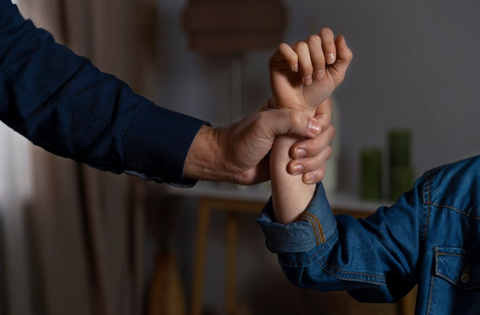
What are the Statistics About Sexual Violence in the US?
Understanding sexual violence statistics is both disheartening and enlightening. However, it's essential to craft effective interventions that mitigate such incidences. Below are some key figures about this significant societal issue.
Incidence of Sexual Assault: As per the National Sexual Violence Resource Centre (NSVRC), one in five women reported experiencing completed or attempted rape at some point during their lives. The statistic indicates how many women are sexually assaulted - a shocking 20% of all females.
Lifetime occurrence among men: Although less prevalent than amongst females, males endure this distressing experience as well, with approximately one in 71 men having been raped at least once, according to NSVRC data.
Perpetrators' relationship with survivors: Contrary to common misconceptions around stranger-perpetrated attacks, the majority of sexual assaults happen within known relationships; as much as eight out of ten cases involve victims knowing their perpetrator before the attack, whether as intimate partners, relatives, or acquaintances.
Childhood Experiences: Quite alarming is the fact that nearly half (49.5%) of multiracial women and more than forty percent (42.2%) of non-Hispanic Black females undergo some form of sex coercion.
Campus Sexual Violence: College-aged women are at an elevated risk of experiencing sexual violence. In fact, according to the NSVRC, more than 20% percent of female undergraduate students report enduring some form of sexual assault.
Age and Assault Rates: Statistics show that certain age groups have higher victimisation rates. Around half (54%) of individuals aged between 18-34 who suffered rape or stalking by any perpetrator first experienced these forms or other types of intimate partner violence before reaching the age limit set for college admission - below twenty-five years old.
Secondary Impact on Survivors: The aftermath extends beyond physical harm with considerable psychological impact as well; nearly one-third (30%) of women who experience rape contemplate suicide, while even a larger fraction exhibit symptoms associated with post-traumatic stress disorder(PTSD).
Reporting Incidence and Convictions: Only about a third of all cases tend to be reported to law enforcement agencies, substantially influencing relevant prosecution figures. From every 1000 instances, about five rapists serve jail terms pointing towards the inadequate justice system in dealing with this menace.
Rape Statistics Regarding Race and Ethnicity Disparity: Native American females report disproportionally alarming levels pertaining rapes in comparison against their counterparts from different racial
Ethnicity Disparity: For native American women, the statistics are overwhelmingly disproportionate. According to NSVRC data, about 56% of Native American and Alaska Native females have experienced sexual violence at least once in their lifetime - a figure significantly higher than for other ethnic groups.
Military Service Women Vulnerability: Females serving within military facilities experience elevated sexual assault incidence levels, too. As per an estimated percentage reported by the Defense Department Sexual Assault Prevention and Response Office (SAPRO), it's approximated that nearly five thousand service members each year undergo such experiences.
What are the Treatments for the Victims of Sexual Violence?
Sexual violence is a severe violation of human rights and leads to physical and psychological trauma. A comprehensive approach is needed for victims' treatment, recovery, and well-being. The list below features different types of treatments.
Emergency Medical Care: Immediately after an assault, survivors must receive immediate medical care, including treating any apparent injuries - such as bruises or cuts incurred during the attack.
Preventive Treatments: Following sexual violence incidents like rape, where there might be risks related to sexually transmitted infections (STIs), preventive treatments are essential. Medications for post-exposure prophylaxis against HIV infection within 72 hours might protect one from contracting these diseases.
Pregnancy Prevention Methods: For female victims at risk of unwanted pregnancy due to unprotected intercourse resulting from sexual violence, administering emergency contraceptive pills becomes necessary within five days following an incident.
Forensic Examination: This process involves collecting evidence about the violent act that has been committed on them for future legal purposes in case charges get pressed against perpetrators later on by either victims themselves or law enforcement authorities involved in investigations concerning cases involving sexual abuse crimes happening towards those affected individuals.
Psychological Counseling/Therapy: This assists in the process of recovery by helping victims manage stress and trauma reactions, build resilience, restore self-esteem, regain a sense of control over their lives, and improve relationships with others.
Support Groups: These are gatherings or organizations where individuals who have experienced sexual violence offer each other comfort and advice based on shared experiences. Such forums provide emotional support and practical guidance on dealing with legal procedures or seeking assistance from social services.
Trauma-Focused Cognitive Behavioural Therapy (TF-CBT): A specialised type of therapy designed especially for people who have post-traumatic stress disorder (PTSD) symptoms caused by experiencing sexual violence incidents personally. TF-CBT assists survivors in understanding and changing thought patterns, leading them into risky behaviours while teaching skills that aid them to handle distressing thoughts better.
Eye Movement Desensitisation Reprocessing Treatment(EMDR): EMDR is another therapeutic intervention utilised particularly when treating PTSD associated with disturbing memories related directly towards events like personal experiences involving any forms/types cases concerning acts classified under what 'sexual assault' generally entails according international classifications used widely among mental health professionals globally today worldwide including those located here at home domestically within our borders too as well even abroad. It involves recalling distressing images while receiving several types of bilateral sensory input, such as side-to-side eye movements or hand tapping. EMDR is intended to help victims alter reactions toward memories of their traumatic experiences.
Medical Therapy: Long-term medical therapy might be necessary for particular cases where sufferers develop chronic conditions linked with sexual violence, such as sexually transmitted diseases that persist over long periods and require extensive treatment.
Completed Health Check-ups: Regular health check-ups are beneficial in detecting any potential lingering effects stemming from the incident on a victim's physical health promptly so appropriate actions get taken at the right time.
Substance Abuse Treatment Programs: Since resorting to alcohol or drugs often occurs when victims try coping with pain caused by traumatising incidents, specialised substance abuse programs provide much-needed assistance. It's important to handle these issues sensitively because they compound trauma experienced by victims while impeding recovery processes if left untreated properly.
What are the Types of Reaction Traumas Most Victims of Sexual Violence Suffers?
Victims of sexual violence often endure significant physical, mental, and behavioral challenges as a direct consequence or aftermath of the traumatic event. An array of reaction traumas are noted in these individuals, leading to an overall impairment in their quality of life.
Behavioural Reactions
Behavioural reactions refer primarily to changes survivors exhibit that are observed externally. These include:
Change in Sleep Patterns: Victims might experience insomnia (lack/cannot sleep), hypersomnia (excessive sleep), or nightmares due to developing post-trauma.
Substance Abuse: A survivor might start using illicit substances, alcohol, narcotics, etc., with higher frequency than before trying for self-medication purposes or escapism.
Hyper-vigilance or Increased Startle Response: This refers to heightened sensitivities like being easily startled - indicating a high alertness level due probably to fear factor developed after trauma exposure.
Physical Reactions
Physical reactions pertain mainly to bodily alterations seen following distressing events such as this one, including:
Somatic Symptoms: Experiencing unexplained body pains, headaches, and general discomfort that doesn't have identifiable medical root causes usually results from chronic stress endured by the victim
Gastrointestinal Problems: Some victims report issues linked to digestive system dysfunctions like constipation, acid reflux, or dyspepsia. These issues often originate from the chronic stress and anxiety survivors of sexual violence endure.
Fatigue: A constant state of tiredness, physical weakness, or lack of energy is commonplace for victims, especially those experiencing insomnia resulting from trauma-related nightmares or fear.
Mental Reactions
The most profound impact is arguably on an individual's mental health, as a result of which they might experience numerous cognitive and emotional changes such as:
Post-Traumatic Stress Disorder (PTSD): Victims are at high risk of developing PTSD - a severe anxiety disorder characterised by flashbacks and unsettling thoughts about the event, causing extreme distress and hindering normal life-functioning.
Depression: Feelings associated with intense sadness lasting longer periods leading towards potential suicidal ideation are frequently reported amongst victims
Anxiety Disorders: Survivors often battle persistent feelings related to unease, like worry accompanied by panic attacks, indicating generalised anxiety disorder development post-trauma
Social Isolation: Victims often withdraw socially due to their increased vulnerability levels, making them shy away from social situations, escalating loneliness, and ultimately reducing overall lifestyle quality.
Each victim's reaction following the survivor journey remains distinctly personal, depending largely upon resource availability like support system existence aiding the recovery process aftermath traumatic events encountered.
Dissociation: The dissociative reaction includes experiences such as depersonalisation or derealisation, where victims might feel detached from their bodies and emotions or experience the world around them as unreal. It is usually a defence mechanism that helps individuals to cope with severe trauma.
Self-Blame and Guilt: Victims often engage in self-blaming thoughts due to manipulation tactics used by perpetrators who shift blame onto the victim themselves, leading to survivors carrying guilt feelings unnecessarily for event occurrence.
Trust Issues: Both interpersonal relationships, trust levels, and others' trustworthiness perception are affected significantly amongst sexual violence survivors, making it difficult to form new connections and thus complicating existing ones.
Body Image Concerns and Eating Disorders: Survivors sometimes exhibit altered body perceptions - viewing their bodies negatively after traumatic events fostering feeding disorders development like anorexia nervosa bulimia, manifesting survivors' attempt to regain control over their life aspects, especially when they feel helpless during the assault.
How Does the Healthcare System Approach Victims of Sexual Violence?
The healthcare system approaches victims of sexual violence with the utmost sensitivity, respect, and professionalism. The primary focus is comprehensive care that promotes physical and psychological healing.
Primarily, a victim's immediate safety takes precedence. Healthcare professionals must ensure the individual is out of harm's way before proceeding with medical attention or exam procedures.
For their physical well-being, an examination is conducted to assess any injuries incurred during the assault - often termed a 'forensic medical examination.' This includes testing for sexually transmitted infections (STIs) or pregnancy where relevant. Any necessary treatment plans get initiated immediately after diagnosis.
Maintaining patient confidentiality remains paramount throughout such processes, enforcing legal requirements, including HIPAA laws, which protect patients' rights concerning private health information disclosure.
Furthermore, mental health plays a significant role in how these victims are cared for by healthcare providers. Offering support through trauma-informed care practices supports survivors emotionally while ensuring they feel heard and understood throughout their recovery process—these encompass supportive counselling services from psychiatrists available within many hospitals offering post-assault treatment facilities.
In some cases, therapeutic sessions might involve cognitive behavioural therapies taught by certified counsellors specialising in sexual-trauma-related incidents- emphasising resilience through enhancing personal strength coping mechanisms rather than predominantly dwelling upon the traumatic event.
Sexual violence often results in long-term mental health challenges such as Post-Traumatic Stress Disorder (PTSD), depression, and anxiety. Therefore, integrated psychosocial support becomes a crucial aspect of post-assault care. While dealing with these victims, healthcare providers are gently persistent to ensure that information about available medical treatments is shared without forcing acceptance.
Healthcare professionals further act as a bridge between the victim and other necessary services, such as law enforcement agencies or advocacy groups, if the survivor wishes to report their assault. They guide survivors through the legal processes involved, which demand documentation from the initial forensic examination—on obtaining consent respecting autonomy—and provide appropriate referrals for any additional resources required during the healing journey as well.
Another essential facet includes prevention efforts directed towards raising public awareness regarding sexual violence - creating an environment where women and children feel safer reporting incidents when they occur while eliminating harmful myths surrounding assaults, too.
Emphasising cultural competency amongst the healthcare workforce forms another indispensable part of the approach within the sexual violence context; recognizing how experiences related to this issue vary significantly due to factors including race-ethnicity-gender identity and socioeconomic status helps ensure all-inclusive, supportive measures indeed reach those who need them most effectively.
Do Sexually Assaulted Victims Acquire Sexually Transmitted Diseases?
Sexually assaulted victims do indeed acquire sexually transmitted diseases. Sexual abuse involves any unwanted sexual activity, often perpetrated using force or taking advantage of another individual's inability to consent due to age, illness, or physical or mental disability.
Evidence confirms that individuals exposed to such difficult circumstances face a heightened risk of contracting various Sexually Transmitted Diseases (STDs), including HIV/AIDS, syphilis, gonorrhoea, and chlamydia, among others. Research in the United States shows a significant increase in STD rates following an assault; one particular study observed more than 40% of women who experienced rape contracted some form of STD after that.
A key factor contributing toward post-assault STD acquisition lies within the nature and context surrounding many sexual assaults: lack thereof condom usage during violent encounters increases risks significantly for transmission. Details from several studies indicate perpetrators rarely use prophylactics throughout these brutal acts, thus leaving victims at optimal exposure to infectious pathogens identified as causative agents for numerous forms of STDs.
Furthermore, our findings emphasising the essential importance placed upon immediate medical attention after instances where the violation occurred under abusive intent, which involved non-consensual sex, play vital roles in the reduction of chances related to future complications brought about by infection spread across the victim's body system without timely appropriate intervention implemented effectively against disease progression especially when it concerns HIV/AIDS infection which requires initiation of post-exposure prophylaxis within a critical 72-hour window for maximum protection.
Victims experiencing sexual assault without immediate recourse to health care professionals, particularly those specializing in forensic and emergency medical response, miss out on the vital initial steps necessary to prevent STD transmission. Specific procedures such as physical examination and prompt administration of preventative medication significantly reduce onward propagation risks concerning microorganisms responsible for sexually communicable diseases.
Many sexually assaulted victims acquire infections following their attack, given both circumstantial evidence from multiple research endeavours and empirical instances observed amongst healthcare service providers dealing with these traumatic occurrences regularly. Thus arises a fundamental need highlighting the utmost importance of comprehensive public health strategies targeted at combating high-profile issues related to how pervasively extensive relationships exist, intertwining forced sex cases together around subsequent diagnosis linked toward various disease types transmitted through intimate contact between individuals along different gender lines whether involving men or women alike worldwide thereby necessitating greater global commitment set towards eradicating this ongoing problem threatening countless lives each year all around our planet today.
Can a Wife be Sexually Assaulted by a Husband?
Sexual assault within a marriage, unfortunately, does exist. The perspective that husbands cannot commit sexual violence against their wives is wrong and largely fueled by outdated societal norms or misconceptions about marital consent.
Understanding an integral right: the right to personal autonomy and physical integrity is a matter of significant importance. The principle applies to every individual, irrespective of marital status. Consent plays paramount significance here; regardless of whether individuals are married, it doesn't automatically entitle one partner to unrestricted access to the other's body without express permission on each occasion.
Marital rape was invisible in most legal systems until the late 20th century when countries began changing laws to criminalise this act – evidence highlighting recognition of these offenses in society. In contrast, previously, they were considered private matters beyond the purview of public interference with prevailing notions like "spousal immunity."
Accordingly, World Health Organization (WHO) recognises intimate partner violence as any behaviour within an intimate relationship causing physical, psychological, or sexual harm - including acts like sexual coercion under duress contrary to a woman's will, which qualify as domestic abuse signifying marital rape isn't only real but recognised internationally too.
Multiple studies support the above points from a science-based vantage. A study by Martin et al., published in the American Journal of Preventive Medicine (2018), reveals a substantial prevalence of intimate partner sexual violence: around 7.6% of women reported being sexually violated by their current or former partners at some point in life.
Additionally, research conducted by Jewkes et al. (2010) published in The Lancet shows that a husband's perpetration of marital rape doubles the risk for later depression and almost triples it for attempted suicide among wives. Another study led by Pallitto and O'Campo (2005) links forced sex within marriage to an increase in unwanted pregnancies and gynaecological problems; mental health issues such as anxiety disorders are seen consistently higher, too.
Therefore, societal myths suggesting the impossibility of a wife being sexually assaulted by her husband stand debunked based on comprehensive scientific evidence and global legal changes. Informed discussions about these pressing matters must be encouraged to break free from harmful stereotypes while advocating necessary steps toward prevention.
Can a Man Be a Victim of Sexual Assault Too?
Yes, a man is indeed a victim of sexual assault. Contrary to longstanding sociocultural beliefs that reserve the focus on women as victims, evidence suggests men are susceptible to this violation as well.
Sexual assault is not gender-biased; it hinges upon power and control more than sex itself. Clinical studies reveal that one in six men has experienced abusive sexual experiences before age 18 (1-2% report being raped as adults). A fact worth noting about male sexual coercion or rape relates closely to underreporting. Men often face considerable societal pressure against acknowledging their status as victims due to being subjected to stigmatisation and disbelief.
A comprehensive analysis by Stemple & Meyer indicates higher rates of men experiencing various forms of sexual violence than commonly perceived - across domestic partnerships, prison settings, military circumstances, etc., further corroborating the existence of male victimhood in the realm of sexual-based offences.
However grim these findings might seem though, they serve an important purpose: bringing awareness relating instances where males experience horror synonymous usually associated only with females – thereby shattering stereotypes about invulnerability and inherent masculinity characteristics many societies uphold strongly while reminding everyone of crucial role both genders play fighting against such atrocities regardless if perpetrated towards woman or man alike.
Is Abortion Allowed for Rape Victims that Got Pregnant?
Yes, abortion is indeed permitted for rape victims who become pregnant, however, this may differ in each country. The gravity and trauma of such circumstances have led many jurisdictions worldwide to permit terminations under these unfortunate conditions.
The World Health Organization recognises that women or girls impregnated by rape need access to emergency contraceptive services and safe abortion care as part of the essential health package. However, laws differ globally, with certain countries still imposing restrictions on abortions, even in cases involving sexual violence.
In contrast, international human rights bodies imply that denying an abortion in cases where a woman has been raped is tantamount to torture. A report from the Center for Reproductive Rights supports this standpoint; it states clearly: "Denying a woman an abortion when she is carrying a fetus resulting from incest or rape amount to severe mental suffering."
Nevertheless, disparity prevails among nations regarding the specifics of legislation - particularly religiously conservative societies remain hesitant towards liberalising their views concerning induced termination of pregnancy conceived through sexual assault incidences.
Everyone must keep striving for universal acceptance, emphasising the importance of providing adequate healthcare options to meet individual needs while preserving the basic rights of each person to control their own body. It's not a simple issue to cut clear lines around. Still, a nuanced topic requires a compassionate approach to understanding the unique contexts within which every case exists, hence establishing the necessity for considerate evaluation implementation policies touching upon similar sensitive subjects.
In the United States, for instance, each state is granted a degree of authority in making its laws regarding access to abortion. According to The Guttmacher Institute (a leading research and policy organisation committed to sexual and reproductive health rights), as of 2021, nearly all US states preserve allowances for cases of rape or incest.
Countries like France, Germany, and the Netherlands, among others, have regulations permitting abortions under conditions including when a woman's life is at risk or after instances such as rape.
However, despite these progressive strides towards realising women's autonomy over their bodies, challenges persist on multiple fronts globally - particularly within developing regions where cultural and religious traditions often influence legal structures contradicting international recommendations aimed at providing the most comprehensive care options to accommodate the needs of victims of violence that result in pregnancy.
Moreover, understanding the impact of non-consenting intercourse goes beyond physiological implications alone; there are psychological repercussions, too – ones necessitating immediate attention to further uphold the sanctities of humanity and value and dignity that individuals deserve, irrespective of circumstances inadvertently putting them through tragic discomforts.
Therefore, it becomes ill-effects traumatic events don't solely revolve around potential physical harm but equally significant mental distress element indeed plays a substantial role in influencing decisions concerning termination pregnancies conceived against one's will whether borne out criminal acts ranging from outright violation personhood illegal forceful actions violating basic human rights.







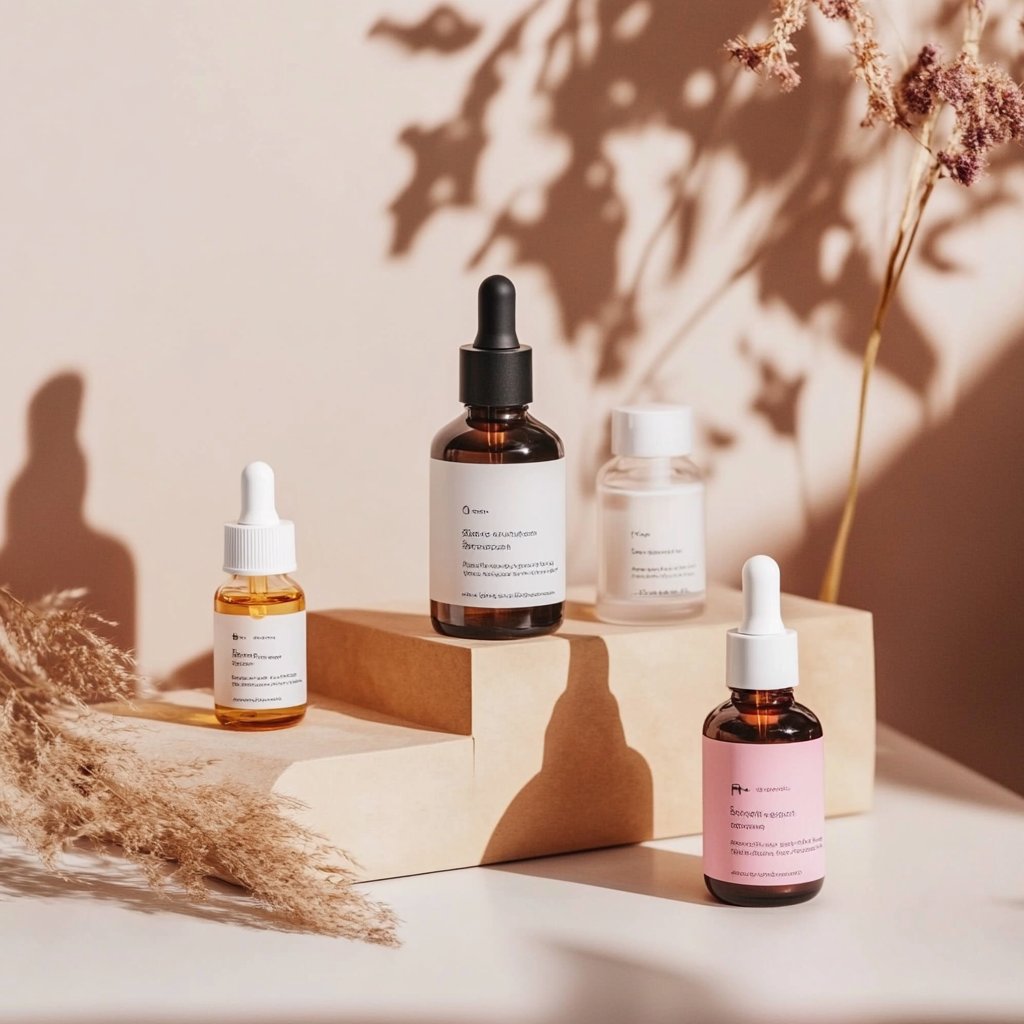











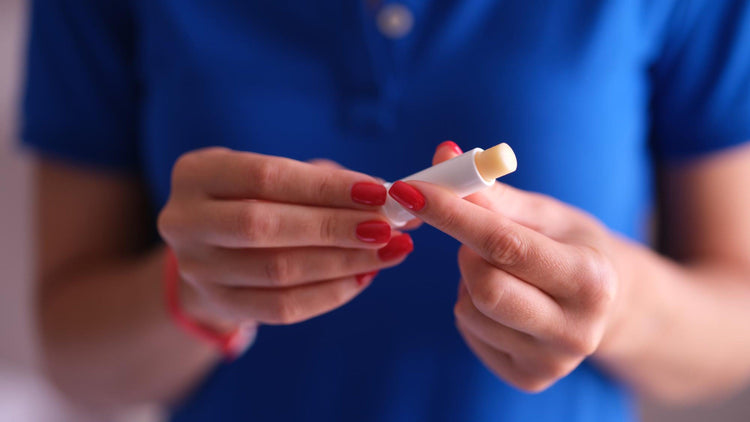




 Rated Excellent by 26,523+ Reviews
Rated Excellent by 26,523+ Reviews